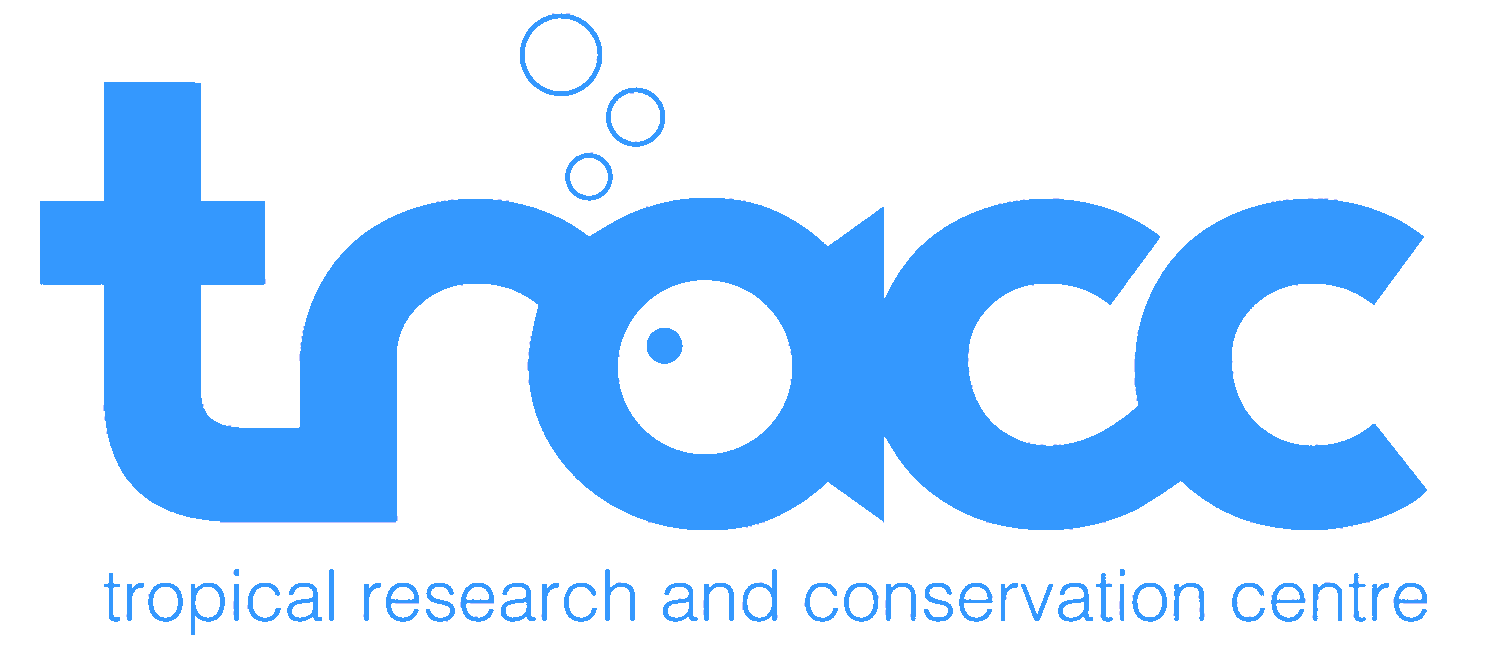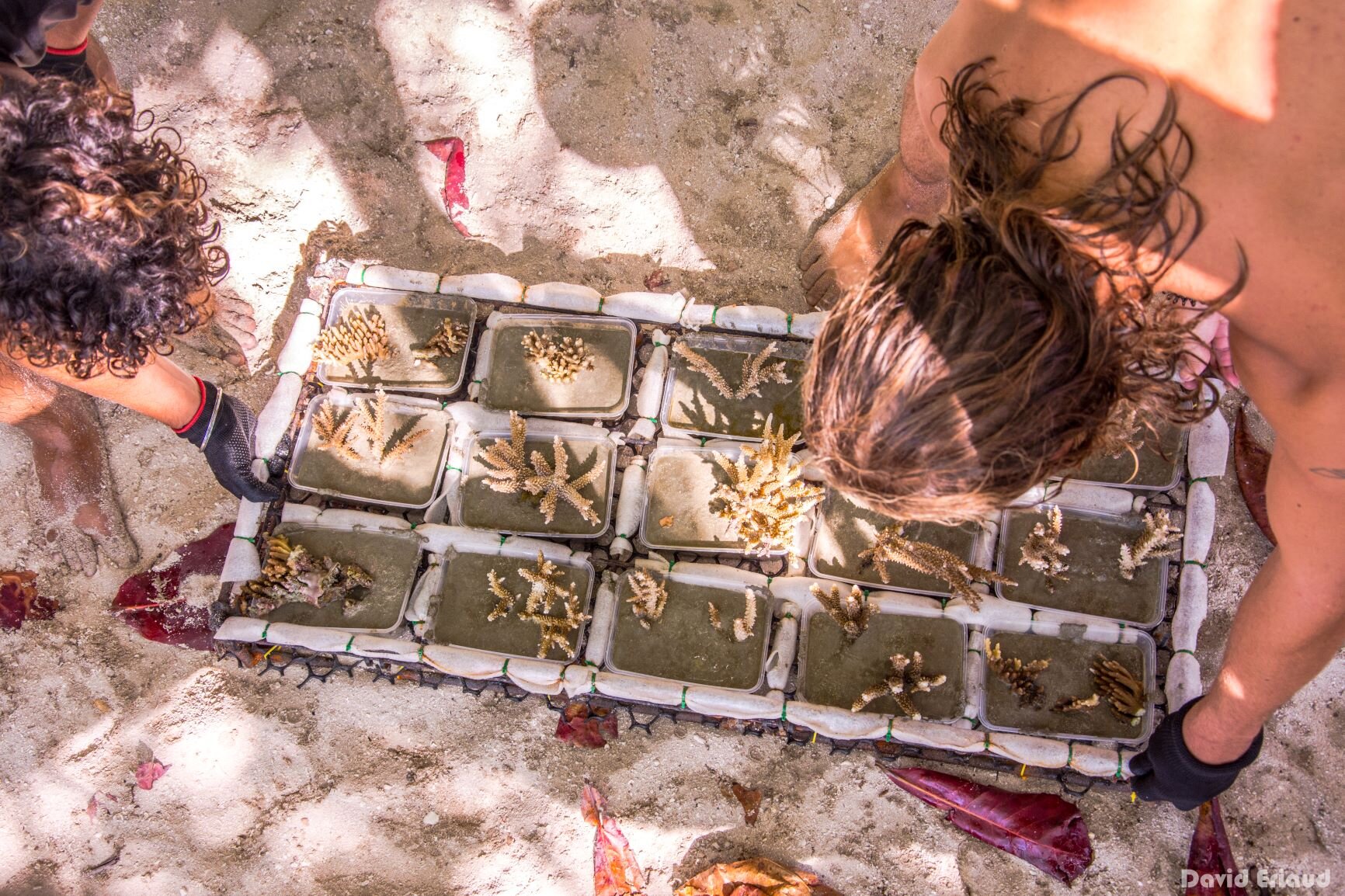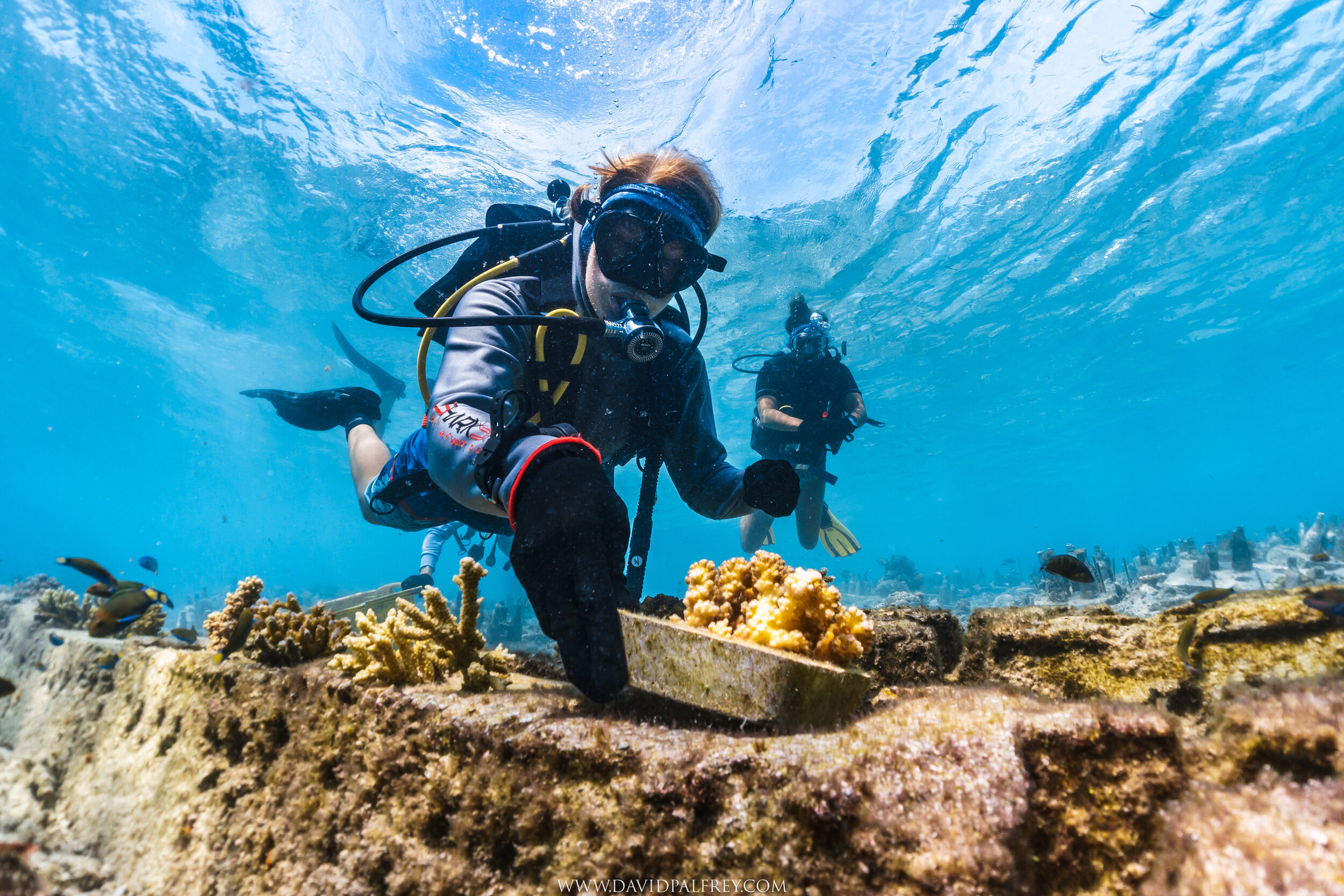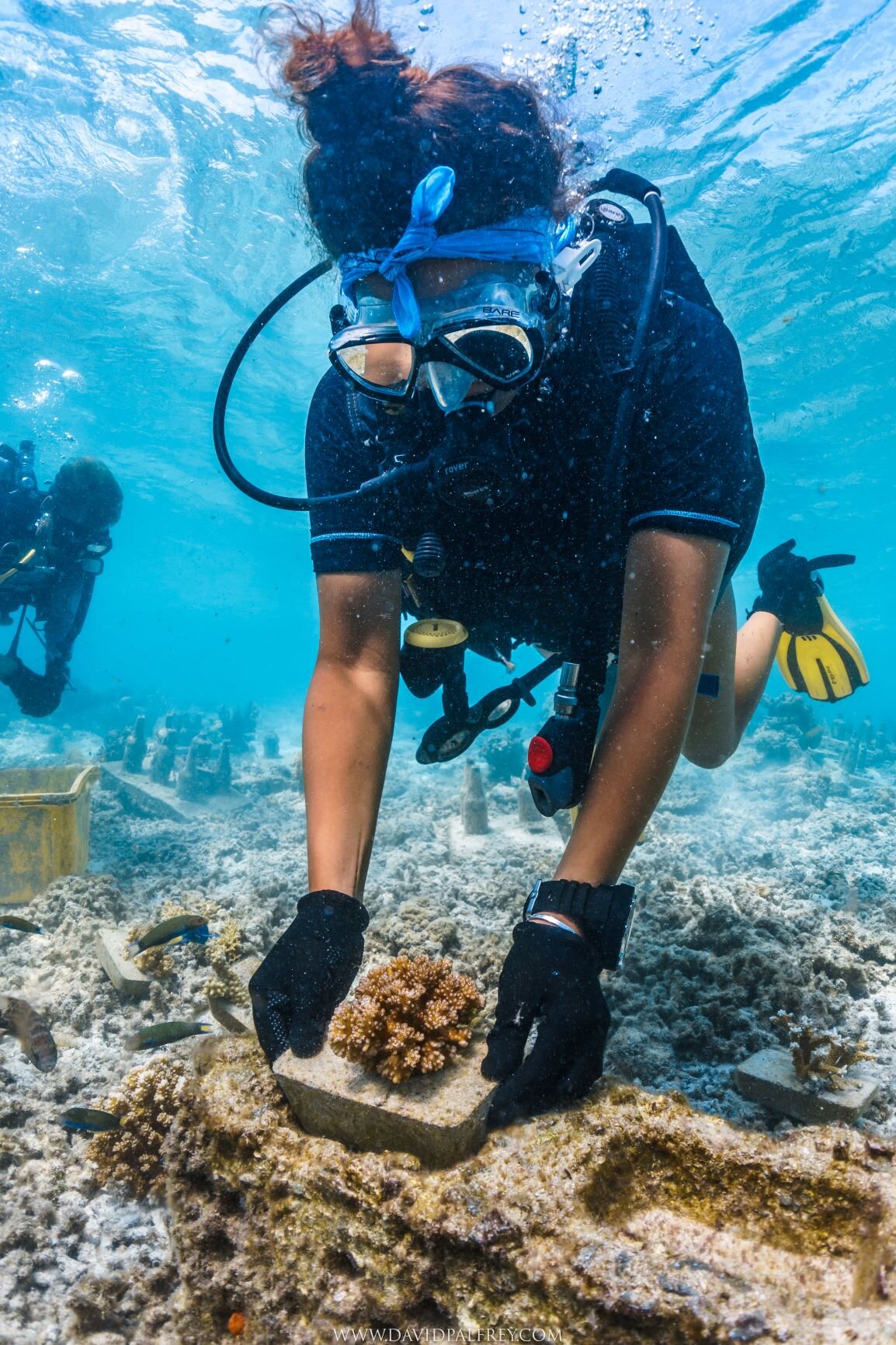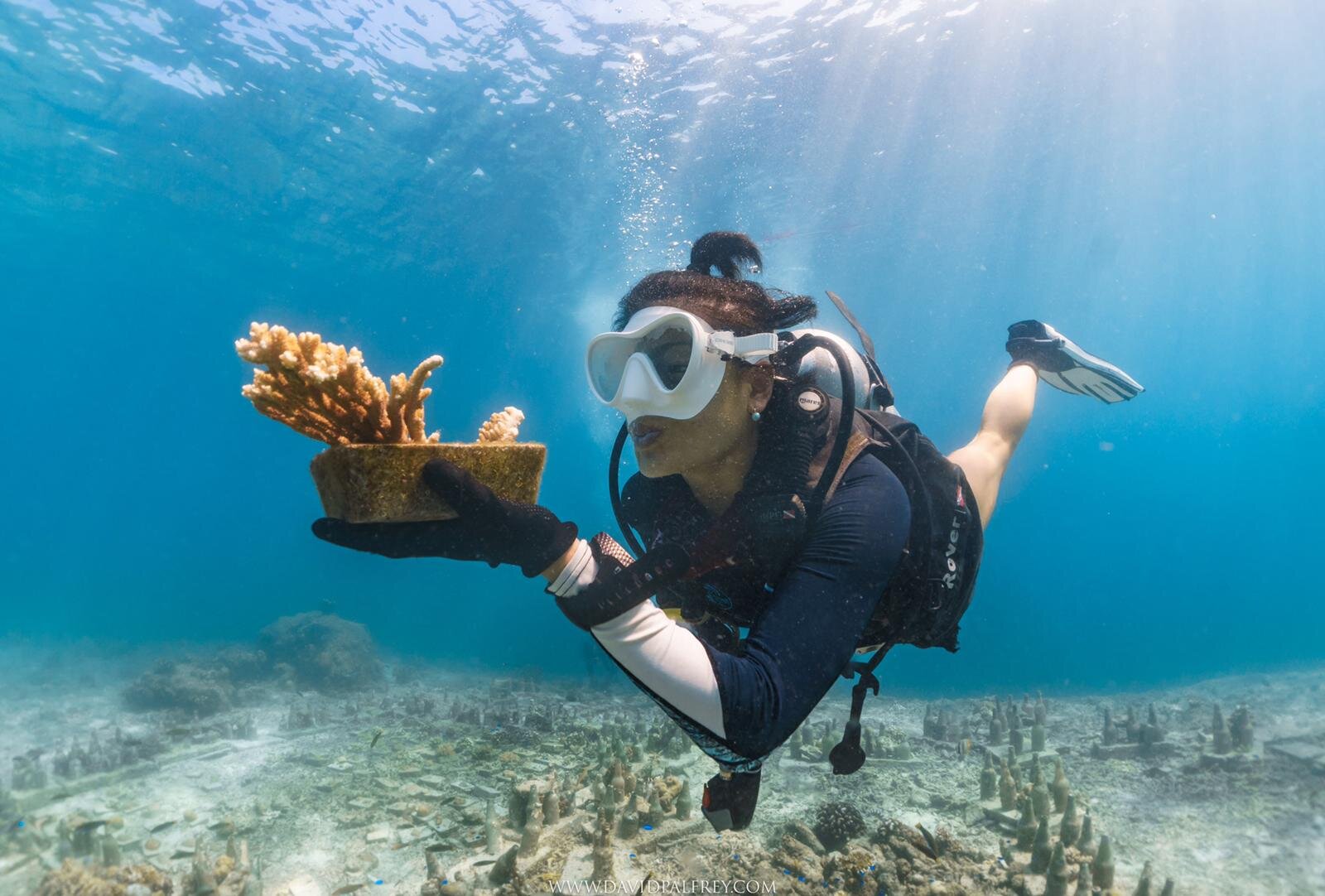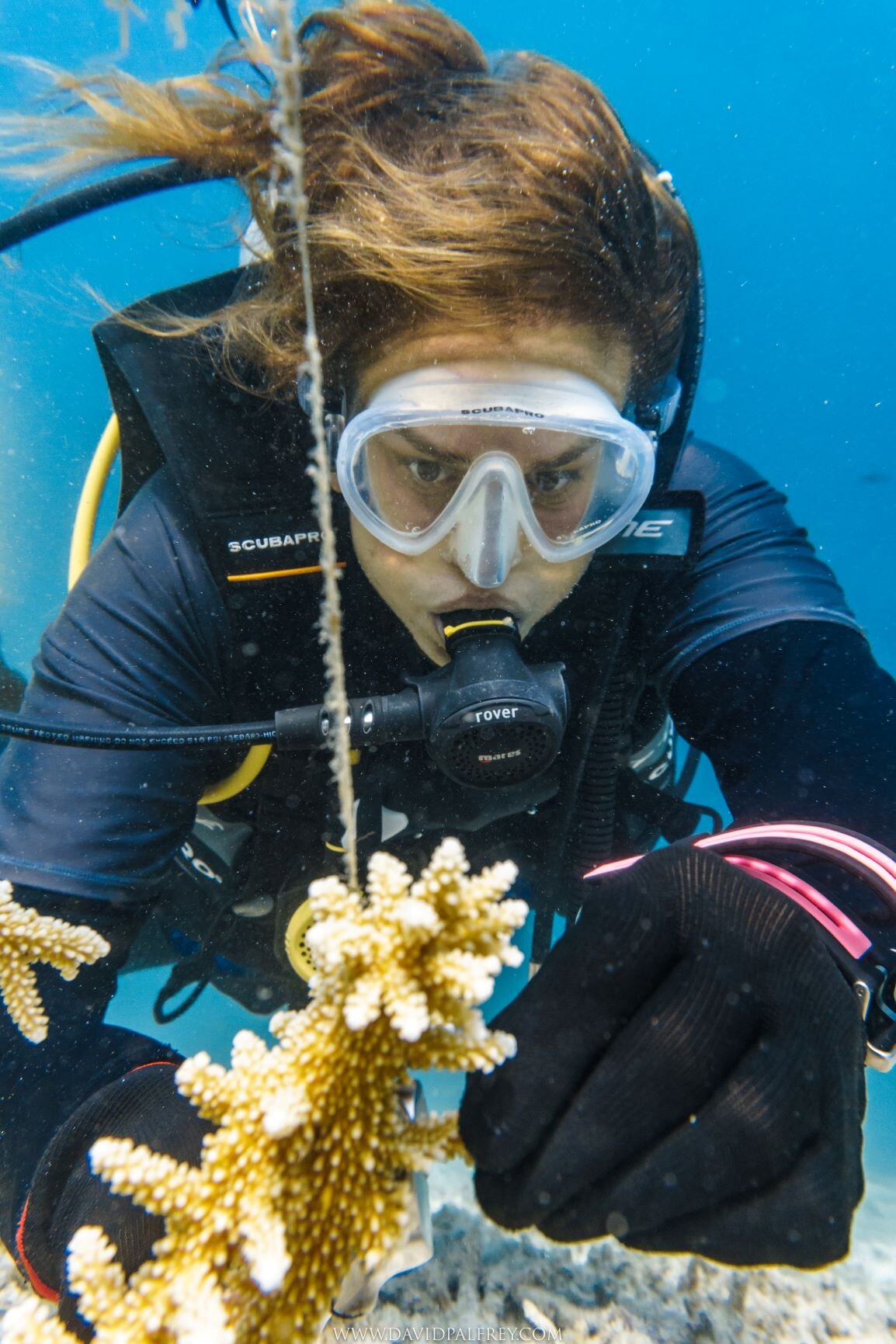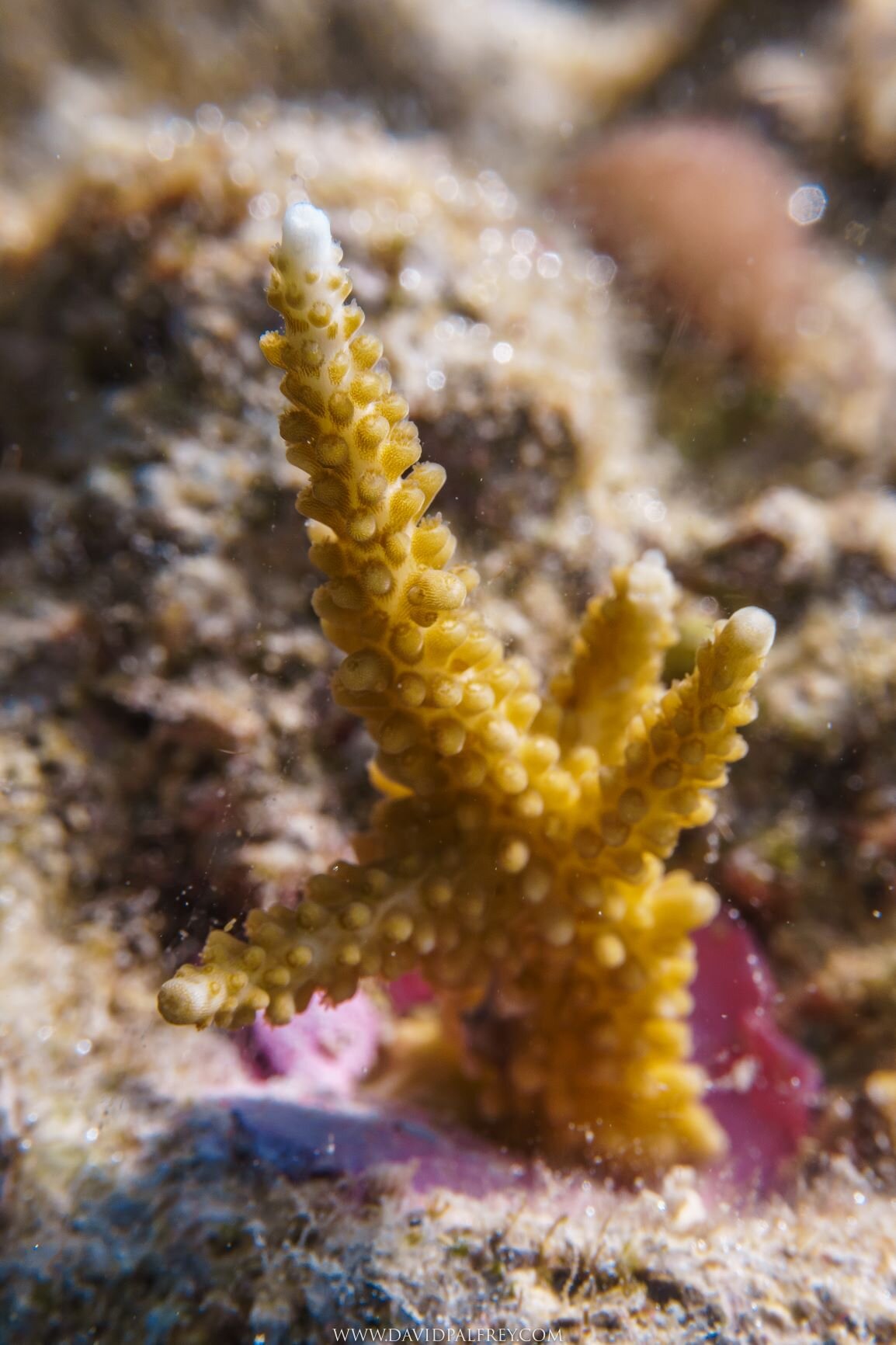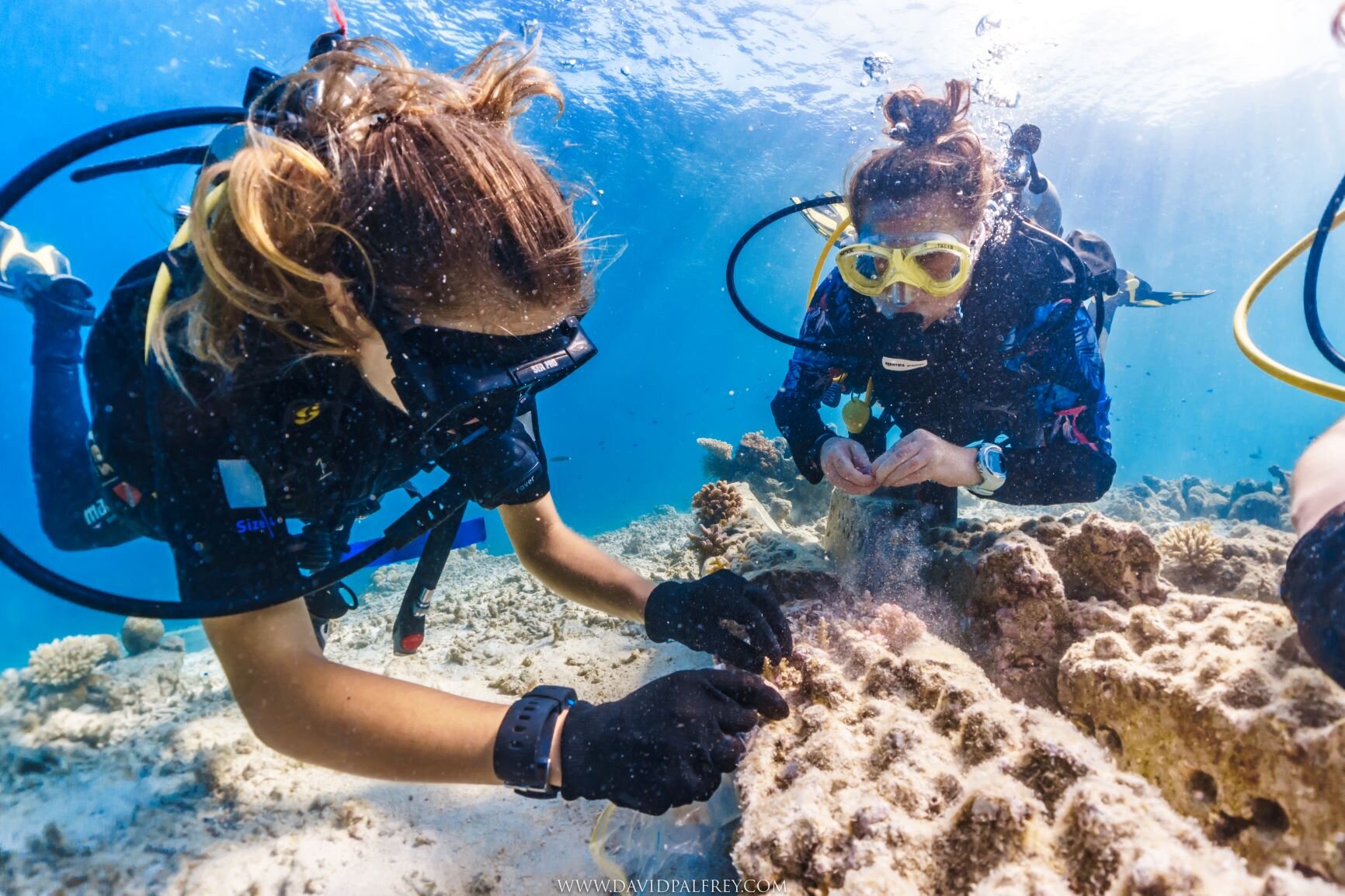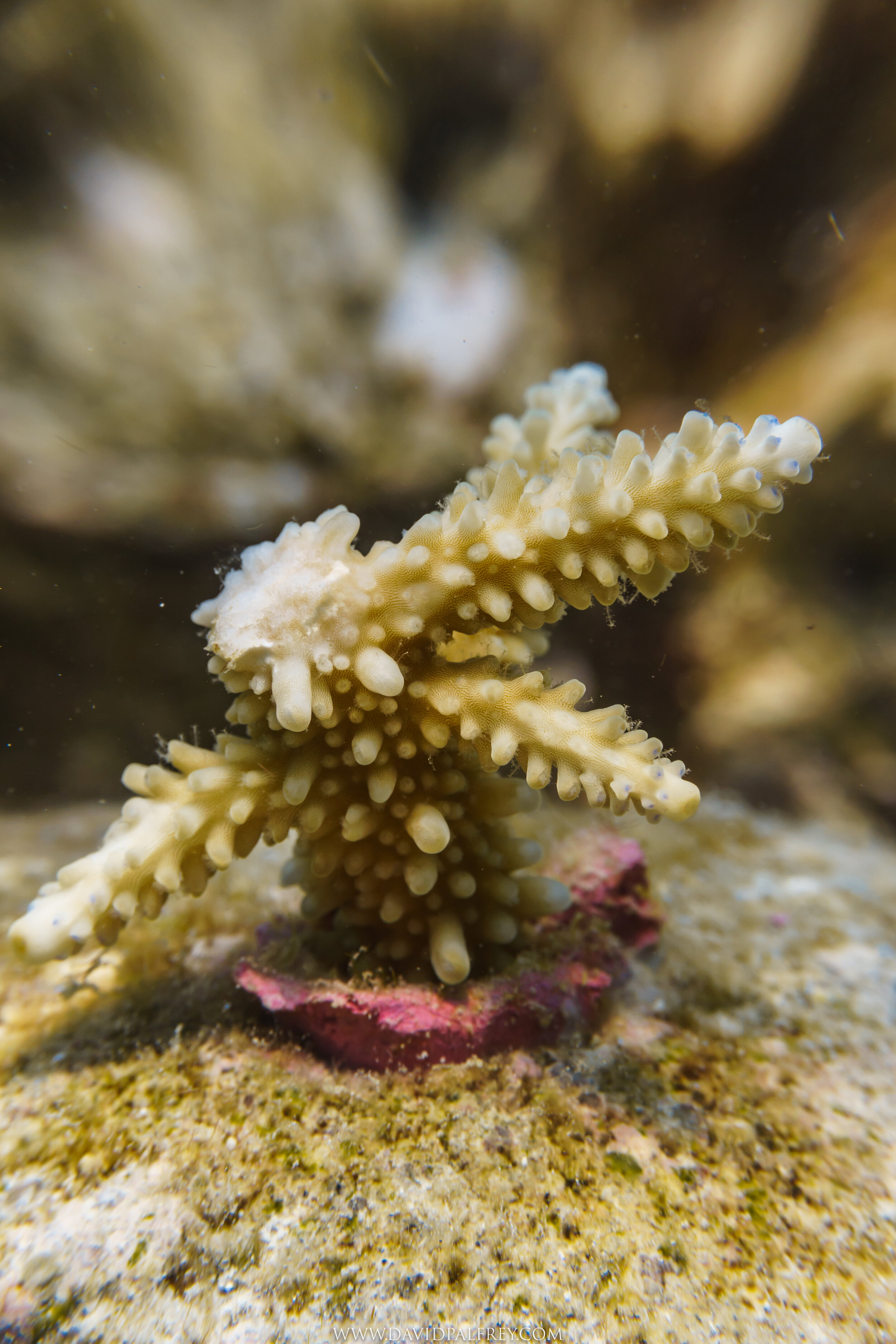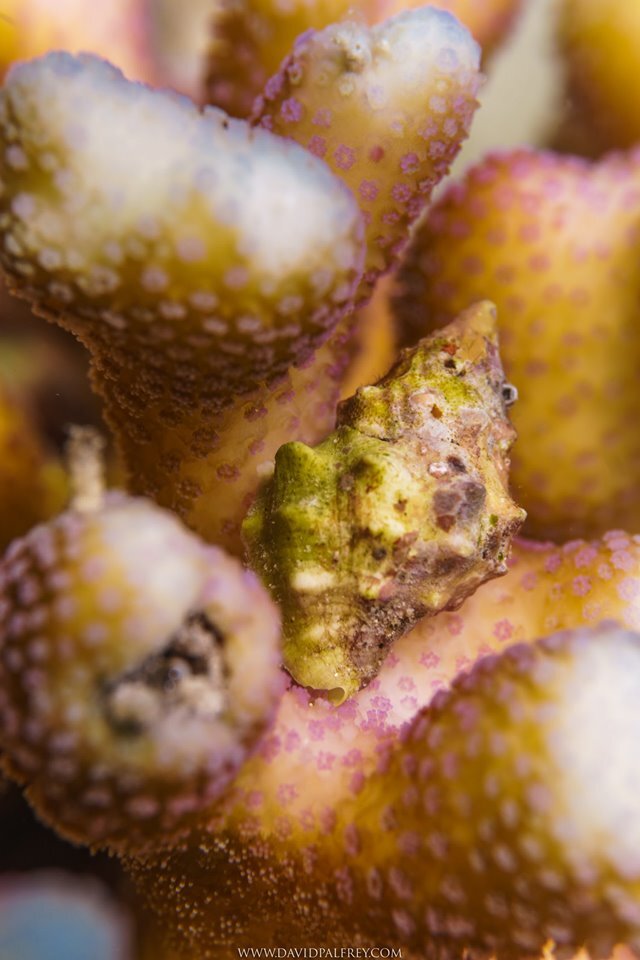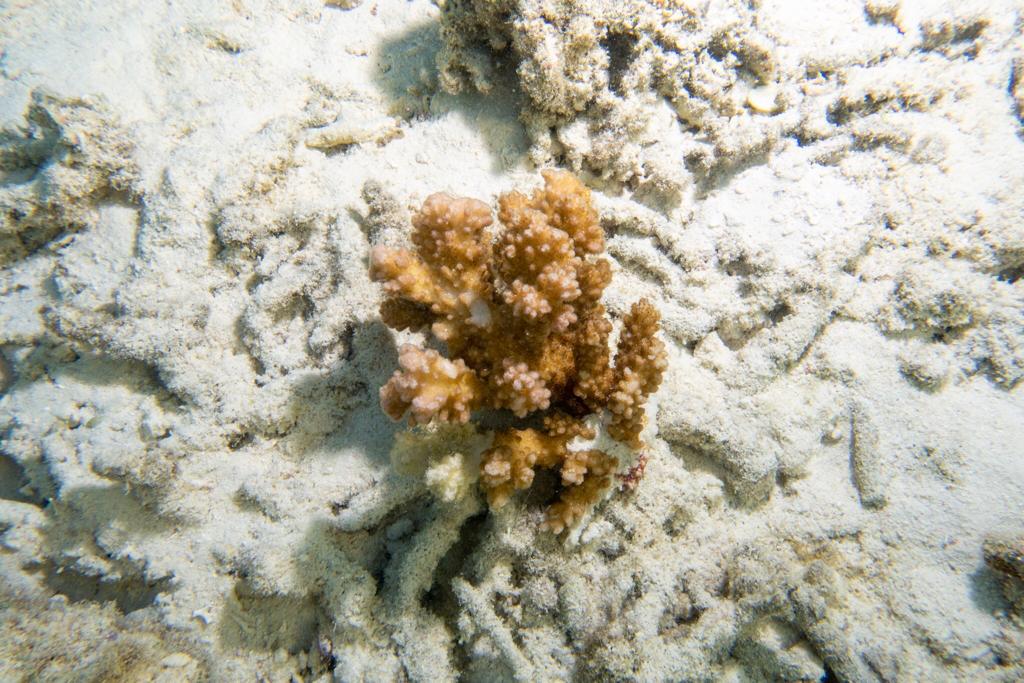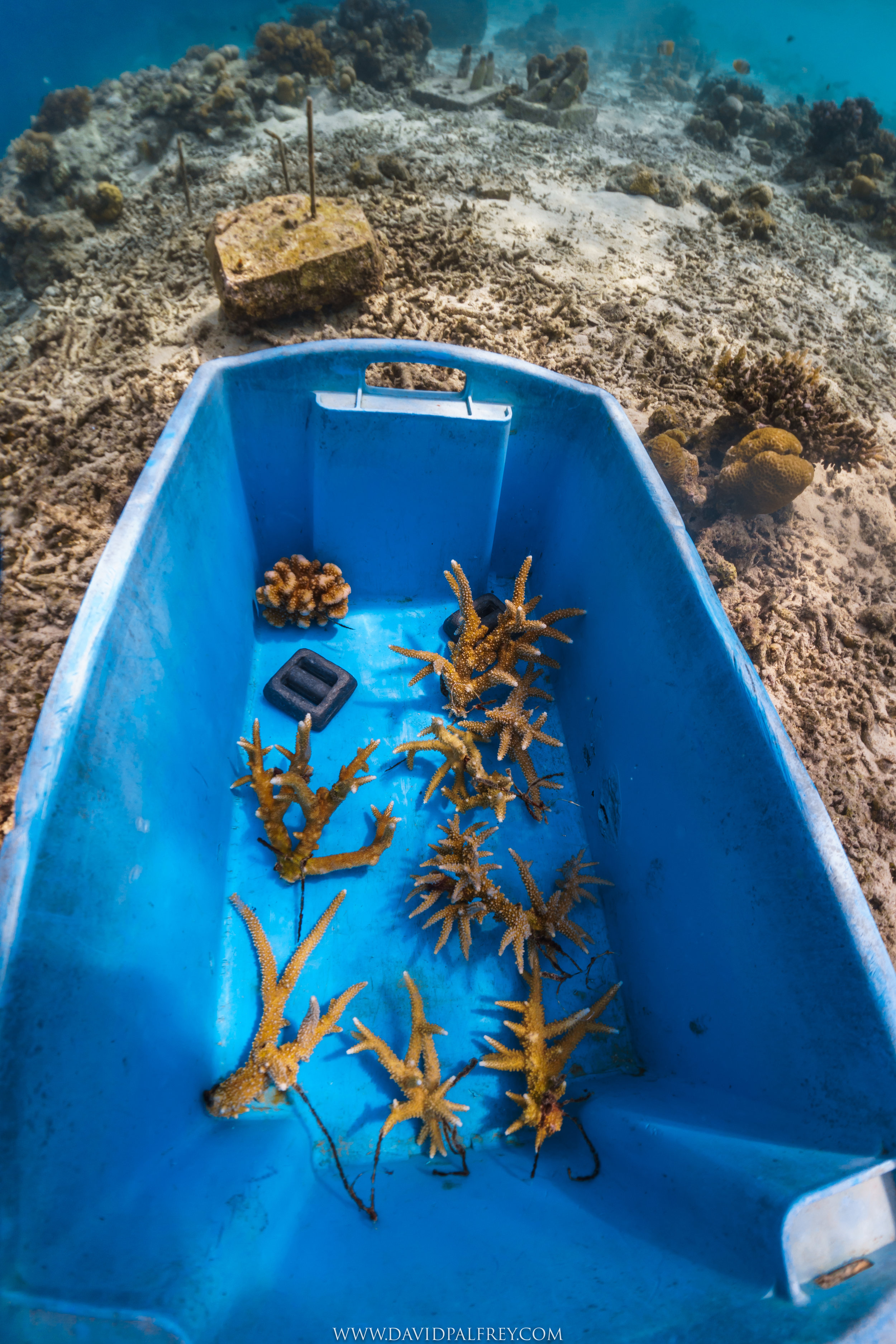CORAL FRAGMENTATION
In the recent light of the controversy in coral fragmenting, we would like to respond to it as TRACC has been working in coral restoration projects for almost a decade now, and we have done numerous amounts of coral fragmenting. Although TRACC performs many other conservation projects, from turtle conservation to crown-of-thorns population control, our main goal being on Pom Pom Island is to re-build the damaged house reef from historical blast fishing 20 years back.
The level of obliteration blast fishing has done at Pom Pom has decreased coral cover an average of less than 5% throughout the island’s reef. Interestingly, some suggest that in an irreversibly damaged ecosystem, the alternative to improve it is to modify and design a new ecosystem that would help it to promote the biodiversity and life that depends on it. However, at TRACC we look in many other factors before launching a restoration project, especially when it involves coral propagation. Before diving into the factors involved in our coral propagation projects, one needs to understand the projects itself.
The two projects that we would like to discuss are our Coral biscuits, where coral fragments are placed into a cement mix molded by take-away plastic containers and Coral epoxy, where coral fragments are effectively glued onto artificial reefs with aquarium grade epoxy.
CORAL BISCUITS METHOD
CORAL BISCUIT METHOD
CORAL EPOXY METHOD
CORAL EPOXY METHOD
‘Corals of opportunity’ – fragments as a result of natural and anthropogenic disturbances are utilized by TRACC into the two projects mentioned earlier. The reefs around Pom Pom Island are highly dynamic and often form on slopes that are almost walls. TRACC aims to create a stable substrate through artificial reefs onto a reef that is limited in coral growth by loose rubble often called ‘killing fields’. Subsequent ‘corals of opportunity’ are holstered onto the stable platforms to survive and thrive, increasing the biodiversity of the reef.
Speaking about biodiversity, the concern about coral fragging also stems from reduction in genetic diversity by having clones of the same colony throughout the reef. However, in regards to the projects, the corals are chosen randomly from the reef and are fragged to smaller fragments until all of it is utilized, hence the project maintains the genetic diversity and uses the natural diversity of corals in the area. Furthermore, the amount of corals planted through fragmentation compared to natural recruitments is insignificant, but the importance of the project is to facilitate the natural processes by helping in stabilizing the loose substrate. This means that the initial coral fragments ultimately provides for a greater abundance and diversity of scleratian corals compared to a possible recovery of ‘killing fields’ of rubble would be dominated with initial soft corals. This rings a bell as the saying goes ‘the end justifies the means’.
Another main reason why TRACC would not merely collect broken coral fragments and utilize them, but choose certain ones and fragment them to smaller fragments to supply the coral planting project is due to the health status of these fragments. The reality for the broken coral fragments laying on the reef is that they have a high potential of acquiring multiple diseases, or without a stable substrate, will die.
On Pom Pom Island, it has been observed that fragments laying on the substrate are often present with Drupella snails, which tend to transmit disease upon feeding. This renders the projects to selecting only healthy fragments for coral propagation where most of the coral supply of the coral epoxy project comes from ‘coral bushes’, a horizontal version of the common ‘coral tree’ practice. The ‘coral bushes’ holds fragments away from the substrate, out of the reach of the corallivores such as crown-of-thorns starfish and Drupella snails. Although ‘corals of opportunity’ are abundant but coral fragments are limited on the ‘coral bushes’ because they require maintenance. Hence, coral fragging used in the coral epoxy project is done so as to propagate corals on the artificial reefs while maintaining the stock from depletion. Although it seems like the best idea to maintain diversity by using all the ‘coral of opportunity’ found on the reef, however, once a disease spread throughout the project, the restoration effort goes to vain.
Another factor one should consider in coral propagation projects is the functionality of the scleratian corals. Sometimes, coral propagation is not focused on the actual diversity but the functions each coral genus can provide. A coral ecologist would tell you that some coral genus are pioneer individuals just like grass on land while other slower growing coral genus are the successors. Hence, to resemble this form of succession, it is definitely not merely to jumble up all the forms and species of corals into one patch of restoration. We need to understand the levels of succession in coral reefs of the region.
Additionally, in the two projects mentioned in this discussion, coral propagation relies on artificial reefs for a stable platform. However, artificial reefs are not immortal and it requires the assistance of natural reefs to be bonded by the calcium carbonate secretion of scleratian corals. At TRACC we desire to reduce the time taken for natural coral growth and use the knowledge of coral fragmenting to bond adjacent units of artificial reefs. This is achieved by fragmenting corals in the coral epoxy project and attaching them in two adjacent artificial reef units underwater. The fragmenting allows the corals to grow faster than normal and with the fact of being clones, they recognize each other and subsequently merge as one colony again. The merging helps to reaffirm the bond of the artificial reefs and with many attempts of this they form structurally sound units just like threads in a rope.
With great power comes great responsibility. The knowledge of coral propagation and restoration should be used wisely. It is of utmost importance to understand the surrounding environment and its intrinsic variability and challenges before attempting to launch a project regarding the subject matter. One needs to understand the existing restoration methods and their advantages and disadvantages. From anecdotal records, TRACC has seen many changes in the reef and Pom Pom Island does not play by the rules. What works or fails on the island wouldn’t necessarily do the same elsewhere due to the multitudes of environmental factors. The training for the projects at TRACC most often begins with the appreciation and preservation of the living reef. The steep angle of the reef slope is a constant reminder that environmental projects should be well planned out, including a retrieval plan for any projects that have failed.
Although monitoring in many of the environmental projects worldwide may seem to incur additional cost but it is a primary way to obtain answers from our environment. The advantage of working on the same reef on the island for almost a decade now is that we get to learn that reef restoration is a very difficult subject. TRACC has employed endless peer-reviewed papers, expert elicitation, and trial and error to come to the position we are in as a conservation centre aiming to restore the small but mighty patch of reef we are custodians of. Because of this, we not only adopt best-practice management, we also constantly monitor our reefs to ensure the work we are doing is beneficial to the continuity of coral reefs. To adapt to the changes and to adopt restoration methods is very important to keep the environment we protect as the number priority. Monitoring never ends at TRACC
